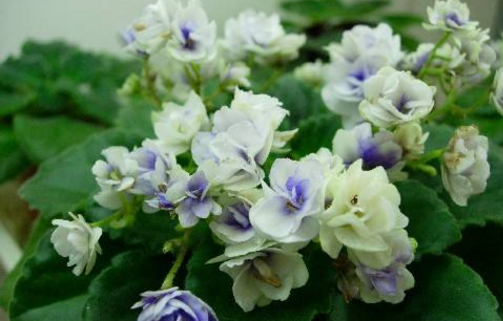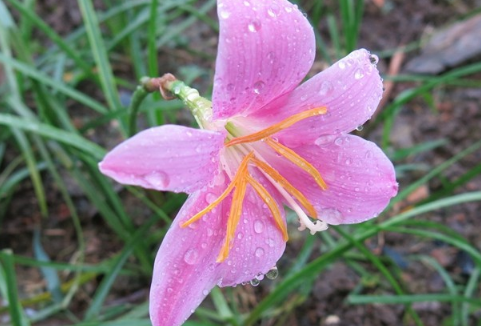Breeding method of Caragana
Pruning
If you want to keep Caragana beautiful, it must be pruned frequently during its growth. After falling leaves in winter, all kinds of diseased branches, dead branches and rotten branches can be cut off. When waiting for the plant to grow again in spring, pruning the branches can make more branches. When Caragana is growing vigorously, cut off the overgrown branches to keep the plant shape beautiful.

Fertilizer application
In general, Caragana has a large demand for nutrients in the growing season, so we follow the principle of "thin application of work fertilizer" when applying fertilizer. It can also be fertilized properly during winter dormancy, liquid fertilizer can also be applied to blossom in spring, and topdressing can be applied after flowering.
Do you understand the efficacy and function of Caragana? If you want to know more, please follow the four Seasons Plant Network!
The Culture method of Caragana making Caragana bonsai
Caragana has beautiful branches and leaves, beautiful flowers and colors, such as sparrows and golden flowers, so it is also called broom, which is suitable for bonsai production. Then Xiaoqi shared the breeding methods of Caragana and the production of bonsai.
I. the culture method of Caragana
1. Display: Caragana basin is light-tolerant and drought-resistant, and should be placed in a place with plenty of sunshine and smooth air. Winter is also relatively hardy, the area south of the Yellow River can overwinter outdoors, it is best to be buried in the soil even in the basin.
2. Watering: Caragana basin watering should master the principle of "no dry, no watering, watering thoroughly", especially during the period, the soil should be kept moist and the flowering period can be prolonged.
3. Fertilization: Caragana pot can apply liquid fertilizer once during dormant period in winter; watering liquid fertilizer once before flowering in spring can prolong flowering period; after flowering, apply topdressing again to promote the growth of branches and leaves, usually apply appropriate amount of thin fertilizer.
4. Pruning: after defoliation in winter, Caragana can cut off all kinds of branches that affect the shape of the tree; after flowering in spring, the branches that have bloomed will be cut short to promote the growth of new branches; in the period of vigorous growth, pruning of long branches can be carried out at any time, and appropriate heart-picking can be carried out to maintain the graceful posture of the tree.
5. Turn the basin: Caragana turns the basin every 2-3 years, and the time is suitable for early spring. When turning the basin, we can remove the old soil of 1 stroke 2 or so, replace the fresh cultivated soil, trim the root system, replant, put it in a place of astigmatism, pour water through it, and often spray atomized water to the pile head, and return to normal management after rejuvenation.
Second, Caragana bonsai production
1. Materials: in addition to the cultivation of small seedlings, the piles for bonsai can also be excavated in the mountains for many years, and those with good appearance can be selected to achieve the effect of rapid prototyping. The mining time can be carried out throughout the dormant period and the rainy season. The method of mining is to cut off most of the aboveground stems, then remove the topsoil, find out the growth direction of the main root, and dig patiently and meticulously along the trend of the main root, which is beneficial to the protection of the root system and reduce the damage.
2. Upper basin: Caragana bonsai basin should be a round or square purple sand pottery basin, in order to fully show the roots of Caragana can choose a shallower basin, basin soil to choose neutral or slightly acidic loam or light clay, should not use alkaline soil, ordinary culture soil or pastoral soil can also be used, the basin should be selected in early spring.
3, modeling: for the main branches can be appropriate bending shape, but to pay attention to the effect of each side, not only in the same plane bending; for twigs are mainly pruning, do not cut the same length, in order to appear uneven. When changing soil and basin, the twisted and changeable root system of Caragana should be used to arrange the root system, wrap it around each other, or properly climb it with brown silk to make it show the beauty of the root.
The above is the introduction of Caragana breeding methods and Caragana bonsai production. I hope it will be helpful to everyone and better breed Caragana.
Breeding methods and matters needing attention of Caragana
Culture methods of Caragana, temperature and light
Caragana likes light and cold, and likes a warm environment. Caragana can be placed in a place with plenty of sunshine and smooth air to maintain and give enough sunshine. But the summer is hot and hot, and the sun is strong, so it is necessary to shade Caragana and keep it in a semi-shady place. In winter, you can put Caragana in a higher temperature indoor maintenance, try to put in a place with bright light. In the area south of the Yellow River, you can also spend the winter outdoors, preferably buried in the soil with pots.
Water and fertilizer management
Caragana in daily maintenance, watering should follow the principle of "no dry, no watering, watering thoroughly" principle, keep the basin soil moist, can prolong the flowering period. It is better to apply fertilizer with thin fertilizer, but we should also make appropriate changes according to the growth status of Caragana. For example, fertilizer can be applied during the winter dormancy period, liquid fertilizer can also be applied to blossom in spring, and topdressing can be applied after flowering.
Soil and basin change
Caragana usually changes the basin every 2-3 years, and the time to change the basin is in spring. When changing the basin, you can remove the old soil and trim the roots, and replant it. After that, Caragana was placed in the semi-shade to slow the root, and the normal management was restored after rejuvenation.
The best soil for Caragana is deep, fertile and moist sandy loam.
Matters needing attention in Caragana Culture breeding methods
Caragana can be propagated by sowing propagation, cutting propagation, split propagation and striping and other methods.
Pruning
Caragana should be pruned frequently in the process of growing. After falling leaves in winter, all kinds of diseased branches, dead branches and rotten branches can be cut off. When the plant grows again in spring, the branches can be more branched by pruning. When Caragana is growing vigorously, cut off the overgrown branches to keep the plant shape beautiful.
- Prev

Culture methods of African Corydalis
Temperature Corydalis likes to grow in a warm environment, and the most suitable temperature for its growth is between 16 and 24 ℃. The temperature should be kept between 18 and 24 ℃ from April to October, and between 12 and 16 ℃ from October to April of the following year. African Jin doesn't like hot weather.
- Next

Propagation method of leek lotus
The bulb propagation of leek lotus can be carried out in spring or autumn. First, the bulb root is dug out and separated from the mother plant. The bulb root is replanted in the culture soil, watered thoroughly at one time, and kept in a cool place. After a week, you can bask in the sun more to ensure adequate moisture and nutrients.
Related
- Fuxing push coffee new agricultural production and marketing class: lack of small-scale processing plants
- Jujube rice field leisure farm deep ploughing Yilan for five years to create a space for organic food and play
- Nongyu Farm-A trial of organic papaya for brave women with advanced technology
- Four points for attention in the prevention and control of diseases and insect pests of edible fungi
- How to add nutrient solution to Edible Fungi
- Is there any good way to control edible fungus mites?
- Open Inoculation Technology of Edible Fungi
- Is there any clever way to use fertilizer for edible fungus in winter?
- What agents are used to kill the pathogens of edible fungi in the mushroom shed?
- Rapid drying of Edible Fungi

